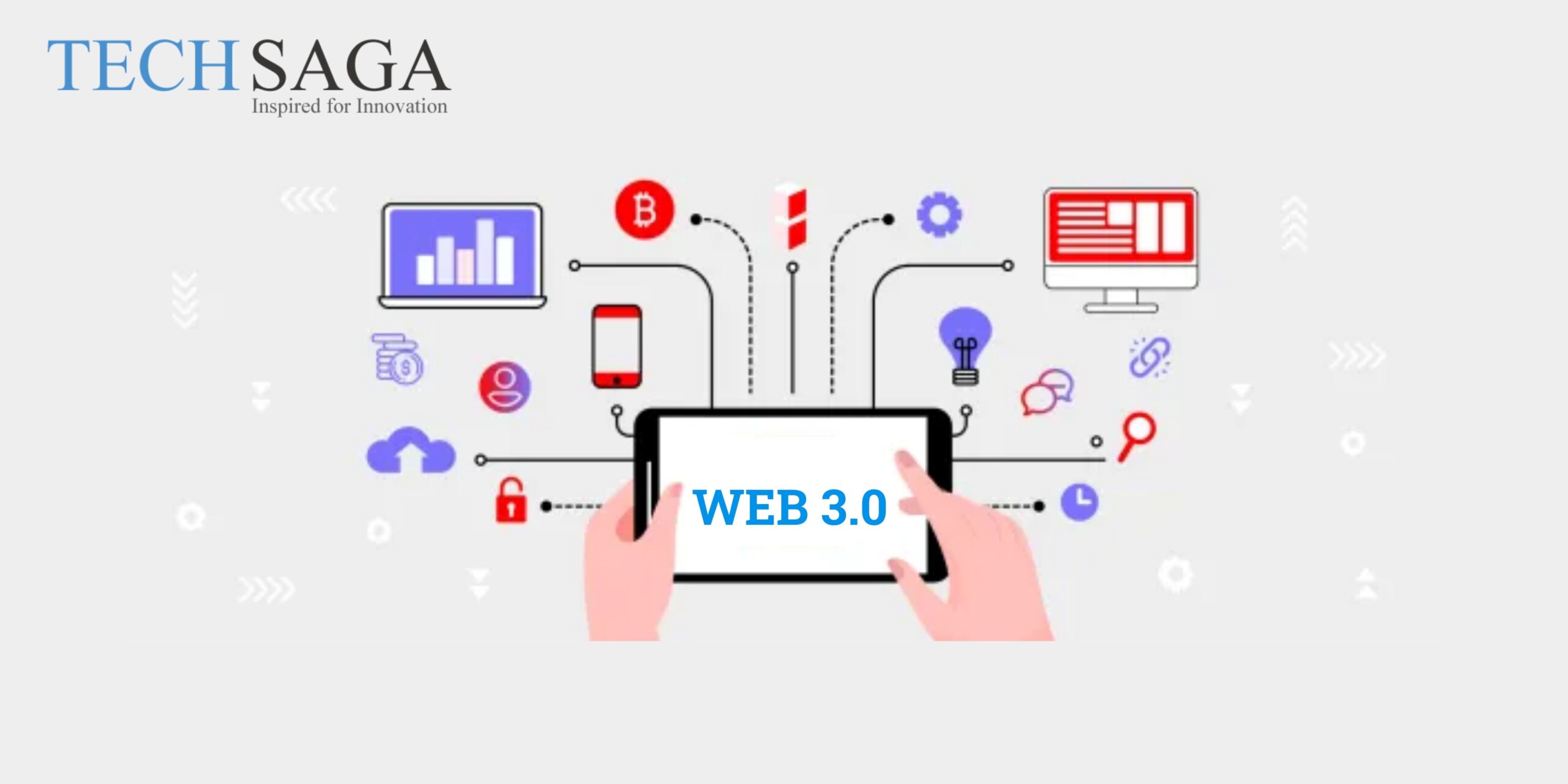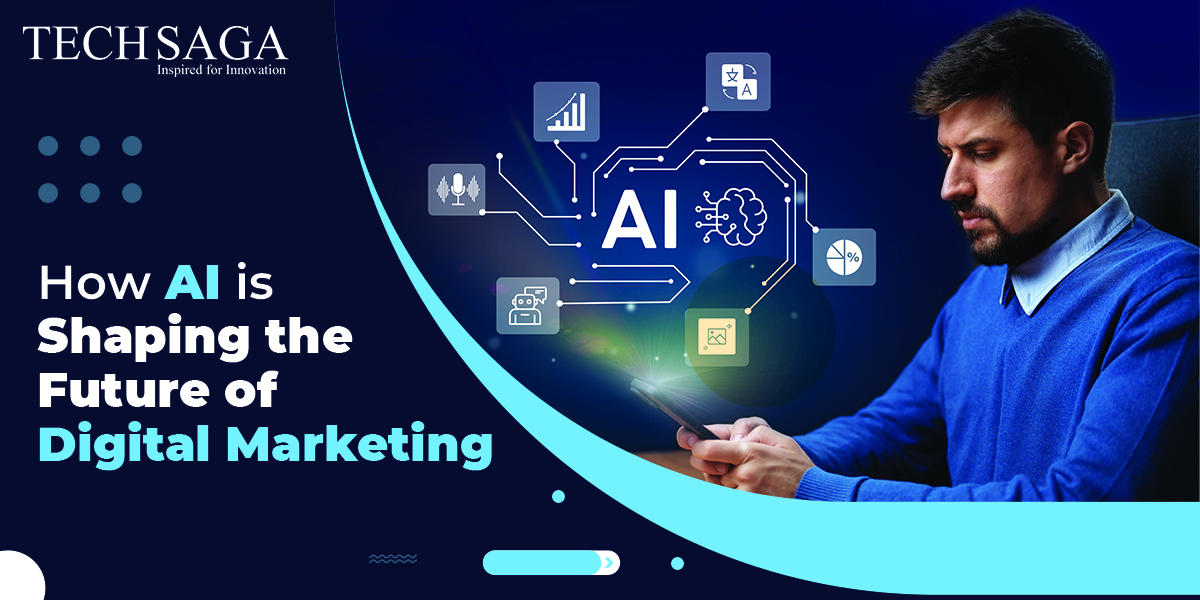Team Techsaga
Gain valuable insights and stay updated with the latest innovations through our engaging blog. Explore trends, technology advancements, and expert opinions to navigate the ever-evolving world of IT.
WEB 3.0: THE MARKETING REVOLUTION AND ITS IMPACT
.Web 3.0 has been all over the internet receiving global attention in the crypto world. Here, we will learn how Cryptocurrency ideas tie into the evolution of our current internet. And what it means for you as a user?
Web 3.0 has very innovative criteria for creating content, it makes you the owner of your content. And no one has the power to acquire any ownership or copy your views, thoughts, and efforts you made.
Marketing agencies are in keen sight to use Web 3.0 in their marketing strategies to bring out a whole new role of digitalization in their business.
Here, we’ll learn about what were we using and how far have we come along in this digital web world. All the improvisation that has been made, what were the effects, and what still we need?
Let us start by digging into the history of the web, starting from the basics we have Web 1.0, Web 2.0, and moving to Web 3.0.
Web 1.0 (Static Web)
Between the years 1991-2004, the internet was mostly a bunch of static pages meaning that whenever you load them, they will show the data on your screen and that’s it. Commonly called “Read-Only” data structure. Let’s say it was just a bunch of Wikipedia all hyperlinked together.
There was very little in the way of user interaction or content generation. Most website owners, at that time, wanted a website to make their information available to anyone at any time.
The web as a whole hasn’t moved much beyond this stage this is called the brick-and-mortar method.
With Web 1.0 there was no variety, readers were just readers. And they had no indulgence in their thoughts and views. It was basically a one-way working method where readers get to read and gain information but couldn’t say if they had any suggestions or feedback.
For healthy work functionality, it is essential to gain a conversation that was hugely lacking in Web 1.0. However, During this time the users of the internet were consumers who go to the internet to consume information.
Now, with time improvements were made and technology like Flash and Javascript added many new and different features in the world of the internet.
Web 2.0 (Interactive Web)
Moreover, From around 2004 until now, the web evolved a lot but one of the biggest changes is the interactivity of the internet, which means that not only did we receive information from pages but the web pages started getting information from us.
Lee Berner described this form of the web as the “read-write” web. The web has dramatically changed the landscape of the web in a short time. It has much potential. It has the ability to contribute and interact with other web users on any digital platform.
As we go through Facebook and YouTube and performed Google searches these centralized companies started collecting data to serve us better, relatable, and required content to us based on our search history.
Web 2.0. evolved to become more interactive, and it allows millions of people to create comments on each other’s work online.
Furthermore, it is not just about communication or interaction that Web 2.0 offers but also the urge and platform to share good or bad but honest thoughts with people all over the world. In fact, Web 2.0 has opened up new doors for digital creators. This made money for them and made the internet and web pages monetized.
A whole new world of opportunities has been raised with Web 2.0 coming onto the front. The interactive web gave a chance for people to come up. and share their ideas and receive their part and praise.
Web 2.0 is the era of targeted advertisement, it describes the current state of the internet scenario where people are not bound to keep their views and opinion to themselves. It is a user-generated network that focuses more on user interaction than Web 1.0.
Read Also:- What Is Google My Business & Why Do I Need It?
Digital Needs in Marketing
Approx 80% of the world’s population is actively using the internet, whether for fun or in need. Thus, it is an effective platform to target the audience in a convenient and handy manner. the promotion of brands and services can be brought into action easily, and it is also a tremendous method to increase links and chain-building processes to improve ranking in the market. With Web 3.0 it will become even more facile for digital marketing businesses to get along with this globalization and digitalized world.
Most customers use advanced and digital methods for purchasing any product, google searches are still on a priority for consumer research. Apart from Google searches, consumers visit through other streams too before they trust any brand. Around 79-82% of the consumers use search, brand websites and customer reviews for research, 14-25% also use social, mobile, and blogs to devise new solutions, products, and brands.
Techsaga Corporation provides digital marketing services keeping a futuristic approach and global vision in mind.
The world is going digital, everyone wants an easy, unique, and effective method of marketing. Whereas customers also choose a convenient option where they are able to view the information they want before purchasing any product or service from a particular company.
Web 3.0 (Semantic Web)
Now we focus on this article’s rock block, i.e. Newly arrived and aroused method, Web 3.0. This third iteration of the web is about putting more control of content in the user’s hand. Web 3.0 represents the phase of the internet where revolution stands along with evolution. Web 3.0 is built upon the core concepts of user utility, decentralization, and openness.
What is Bottom-up Design: It includes code not being written and controlled by experts. but in control of everyone encouraging maximum participation and experimentation.
What is Decentralization?
It means that no permission is required to post on the web, there is no central controlling node, no kill switch, no failure point. There is full freedom from indiscriminate censorship and surveillance. Decentralization is the core tenet of Web 3.0.
In Web 2.0 users used HTTP protocol for information stored at a single server fixed location. While in Web 3.0, information can be stored at multiple locations based on the content and hence is decentralized.
Web 3.0 ensures that users retain ownership control. And the data generated by increasingly powerful computing resources. And disparate including mobile phones, desktops, appliances, vehicles, and sensors will be sold by users through decentralized data networks.
Potential & Pitfalls of Web 3.0
- First, Web 3.0 goes well beyond the Semantic Web as envisioned by Web pioneer Tim Berners-Lee.
- Second, Web 3.0 technology is based on semantic web concepts and natural language processors. It also includes features like AI and machine learning and trustless/permissionless systems like blockchain and peer-to-peer networks.
- Third, it gives users greater control over their personal data with core features of Decentralization and a permissionless system.
- Fourth, This web iteration of the internet is also associated with cybercrime, hate speech, misinformation, and other regulatory risks.
- Fifth, Regulation, and enforcement are also difficult to follow with Web 3.0
This internet will let you experience more personal and customized browsing. Moreover, with a more human-like search assistant that will help establish an equitable web. Digital Marketing Services helps small business companies to boost business growth with web 3.0 digital evolution and technologies.
TAG: Digital Marketing




